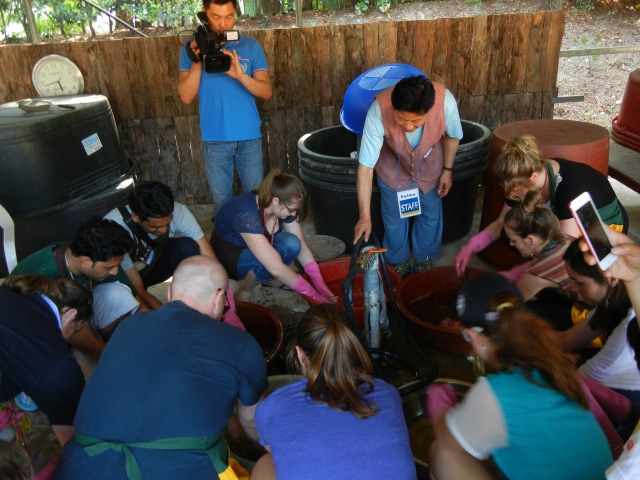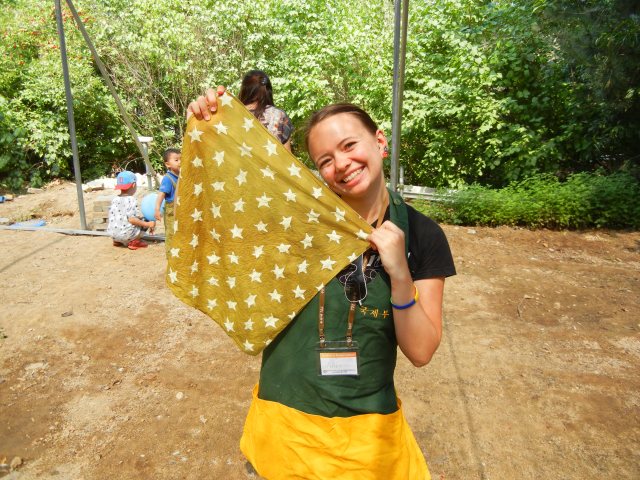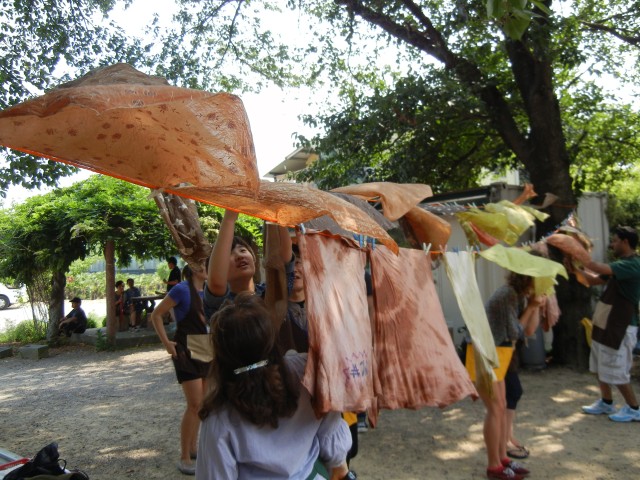This month, the event at the Buddhist temple that I went to twice before.
The handout they gave us had this written on it:
Origins of Natural Dye
Natural dyes are dyes or colorants derived from plants, invertebrates, or minerals. The majority of natural dyes are vegetable dyes from plant sources – roots, berries, bark, leaves, and wood – and organic sources such as fungi and lichens.
Archaeologists have found evidence of textile dyeing dating back to the Neolithic period. In China, dyeing with plants, barks and insects have been traced back more than 5,000 years. The essential process of dyeing changed little over time. Typically, the dye material is put in a pot of water and then the textiles to be dyed are added to the pot, which is heated and stirred until the color is transferred. Textile fiber may be dyed before spinning (dyed in the wool), but most textiles are yarn-dyed or piece-dyed after weaving. Many natural dyes require the use of chemicals called mordants to bind the dye to the textile fibers; tannin from oak galls, salt, natural alum, vinegar, and ammonia from stale urine were used by early dyers. Many mordants, and some dyes themselves, produce strong odors, and large-scale dyeworks were often isolated in their own districts.
A variety of plants produce red dyes, including a number of lichens, henna, alkanet or dyer’s bugloss, asafoetida and madder. Madder and related plants of the Rubia family are native to many temperate zones around the world, and have been used as a source of good red dye since prehistory.
Process of Natural Dye
The essential process of dyeing requires soaking the material containing the dye (the dyestuff) in water, adding the textile to be dyed to the resulting solution (the dyebath), and bringing the solution to a simmer for an extended period, often measured in days or even weeks, stirring occasionally until the color has evenly transferred to the textiles.
Some dyestuffs, such as indigo and lichens, will give good color when used alone; these dyes are called direct dyes or substantive dyes. The majority of plant dyes, however, also require the use of a mordant, a chemical used to “fix” the color in the textile fibers. These days are called adjective dyes. By using different mordants, dyers can often obtain a variety of colors and shares from the same dye. Fibers or cloth may be pretreated with mordants, or the mordant may be incorporated in the dyebath. In traditional dyeing, the common mordants are vinegar, tannin from oak bark, sumac, or oak galls, ammonia from stale urine, and wood-ash liquor or potash (potassium carbonate) made by leaching wood ashes and evaporating the solution. (Above is from Wikipedia.)
I was a bit disappointed to see ‘taken from Wikipedia’ but still.
They gave us an explanation as well, saying that the green dye had plants (mud something…it looked like seaweed) and the red dye had flowers. I can’t remember what the brown dye had in it. I guess another time they had bright blue and yellow as well.
We started with a pot of dye that we had to bring to a near boil and throw all of our rags in.
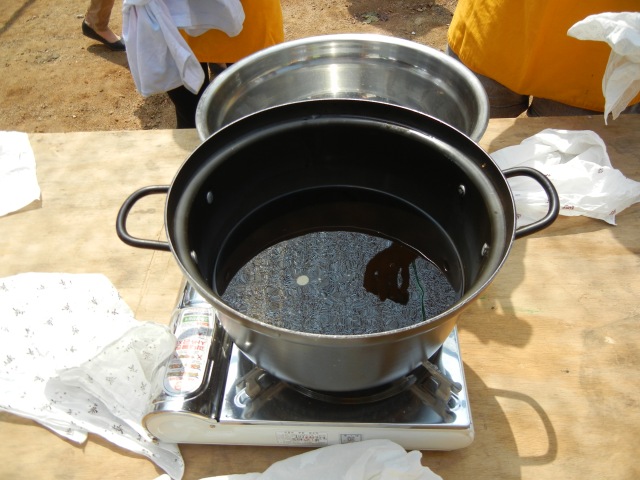 We had to push the handkerchiefs/bandannas around in the dye, wearing two pairs of gloves. The little kids did most of this part.
We had to push the handkerchiefs/bandannas around in the dye, wearing two pairs of gloves. The little kids did most of this part.
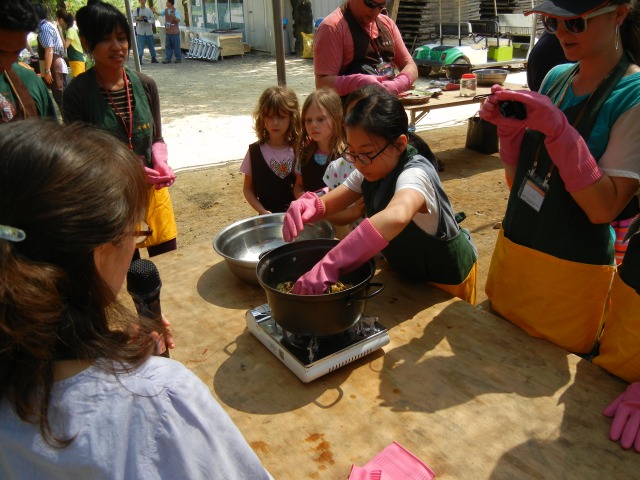 It was then transferred to another bowl and the dye master helped us!
It was then transferred to another bowl and the dye master helped us!
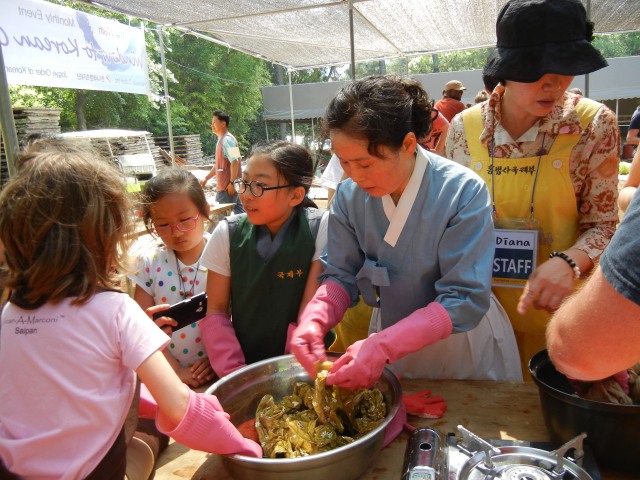 It was then put back into the pot to boil, and the second bowl had water and a binding powder added to it. It was rinsed back and forth between the dye and the binding water. After it was rinsed in cold water.
It was then put back into the pot to boil, and the second bowl had water and a binding powder added to it. It was rinsed back and forth between the dye and the binding water. After it was rinsed in cold water.

